
Become a member
Join today and help protect nature, beauty and history – for everyone, for ever. Enjoy access to more than 500 places with National Trust membership.
Truly a hidden gem
Felbrigg Hall, Gardens and Estate, Norwich, Norfolk, NR11 8PP
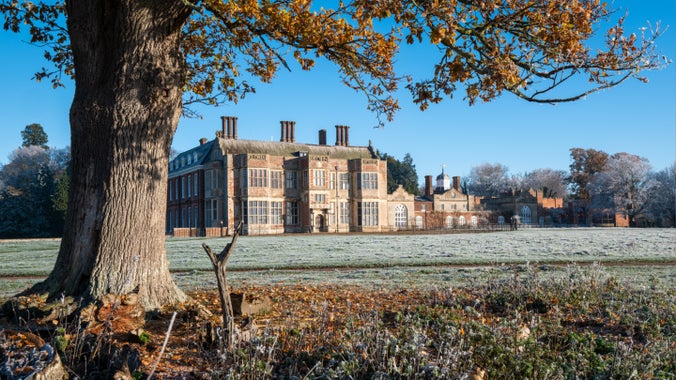
| Asset | Opening time |
|---|---|
| House | Closed |
| Bookshop | 10:00 - 15:30 |
| Garden | 10:00 - 15:00 |
| Parkland | Dawn - Dusk |
| Shop | 10:00 - 15:30 |
| Squire's pantry | 10:00 - 15:30 |
Please note, Felbrigg Hall is now closed for winter conservation cleaning and the Walled Garden will be closed from 22 December. Both will reopen during the February school half-term holiday. The tea-room, shop and second-hand bookshop will be closed between 24-26 December. The car park and estate will remain open throughout.
| Ticket type | With Gift Aid | Without Gift Aid |
|---|---|---|
| Adult (18+) | £13.20 | £12.00 |
| Child (5-17) under 5s free | £6.60 | £6.00 |
| Family (2 Adults and up to 3 children) | £33.00 | £30.00 |
| 1 adult, up to 3 children | £19.80 | £18.00 |
| Group (Adult 18+) | £11.40 | |
| Group (Child 5-17) | £5.70 | |
| Car | £5.00 |
Spend some time browsing titles in the second-hand bookshop in the in the courtyard. If you have any book donations, they are always welcome.
Visit the Squire's Pantry tea-room for a selection of hot and cold drinks, sandwiches, hearty dishes, freshly baked scones and cakes.
National Trust members park free, please scan your membership card to obtain a ticket. Parking is £5 per car for non-members.
Dogs must remain on a lead at all times in designated areas, as marked on our maps, and throughout the estate between 1 March and 31 July to protect ground-nesting birds.
10 x 7.5kW electric vehicle charging points are available in the main car park. Chargers can be accessed using mobile app, RFID card, or contactless payment device. Visit our EV charging partner, RAW Charging's website: www.rawcharging.com/drivers, to download the app before your visit.
A range of seasonal plants for sale are available in the Stable Courtyard.
Our shelves are packed with items ranging from high quality food and drink to cards, books and gifts.
Toilet facilities are available near the visitor reception for the hall.
Please note, there is a change to visitor routes around Felbrigg Hall while contractors are working on a roof and drainage project until spring 2026. Path surfaces leading to the hall entrance are bonded and loose gravel. Please speak to a member of the welcome team, located in a shed between the car park and the hall, for more information. Designated Blue Badge parking and a drop off point available, at the top-end of the car park near the map boards. Accessible toilet available. Pathways around the estate are a mix of gravel, compacted earth and grass. There is a tea-room, second-hand bookshop and food kiosk with step free level access. Other points of interest (hall and gardens) are accessed via slight slopes or small steps. Assistance dogs welcome. There is poor phone signal onsite.
A map is available next to the designated disabled parking spaces and available to download below. There are all-weather paths through the woods and Walled Garden.
There is an ambulant toilet with adaptions, right transfer, near the visitor reception for the hall. Please see our AccessAble Guide (link above) for details as required.
Braille and Large Print guides to the hall are available from Visitor Reception.
There are 12 designated disabled parking spaces, which are free to use for Blue Badge holders, at the front of the main car park.
A drop-off point is available at the top of the car park with seating available. Please park elsewhere in the car park after drop-off. If you require assistance or equipment, please contact the welcome team.
There are induction loops in Visitor Reception; the shop and tea-room areas and a portable induction loop is available from Visitor Reception.
Large Print guides to the hall are available from Visitor Reception.
The tea-room is located in the Stable Courtyard near the hall. There is a slight slope to the area with path surfaces of compact earth and bonded gravel.
The shop is located in the Stable Courtyard near the hall. There is a slight slope to the area with path surfaces of compact earth and bonded gravel.
There are bonded gravel paths and a slight slope to the Stable Courtyard, where the tea-room, second-hand bookshop and shop are located. Path surfaces in the Walled Garden are a mix of loose gravel and grass. Paths elsewhere on the estate can be uneven and are bonded gravel and compact earth.
Powered wheelchairs are welcome in the hall, however due to narrow corridors and furnished rooms, four wheeled PMVs cannot be accommodated. The upper floors of the hall are accessible only by wide shallow stairs with bannisters and handrails.
An all-terrain Tramper and 3 PMVS are available to hire when the welcome team are on duty. Half can be booked by calling: 01263837444 or emailing felbrigg@nationaltrust.org.uk. The others are available on a first come, first served basis, for 90 minutes (last hire at 3pm). Please enquire at any welcome point. A map of suitable routes is provided.
There are several benches located at various points across the estate, as shown on the visitor map. There are chairs in each of the showrooms in the hall for all visitors to use.
There are two manual wheelchairs onsite. Please enquire at any welcome point.
Felbrigg Hall, Gardens and Estate, Norwich, Norfolk, NR11 8PP
Felbrigg is a two pawprint rated place. Enjoy the estate with your dog and check out top tips to make the most of your visit.

Take a look at the map of Felbrigg Hall, Gardens and Estate to help plan your visit.
Check accessible PMV and Tramper routes around the estate and access details for the Walled Garden and hall.
Entertain the whole family at Felbrigg. Go on an adventure on the estate and pitstop in the Squire's Pantry tea-room.
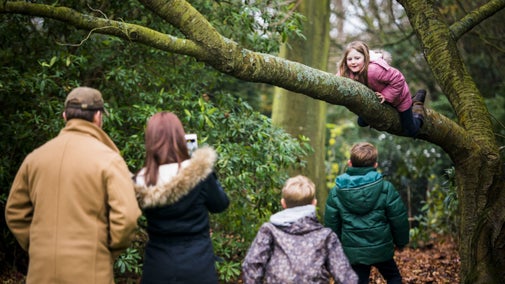
A welcoming 17th-century Hall, home to a fascinating collection, one of the largest in the National Trust.
A delightful Walled Garden with double flower borders, vegetable beds, trained fruit trees and an octagonal dovecote.
380 acres of beech, oak, sweet chestnut, hawthorn and sycamore. Features Victory V avenues commemorating the last squire’s brother.
The ice house in the Great Wood dates to the 18th century and was built to look like a ruin.
The Squire’s Pantry offers hot and cold drinks, sandwiches, hot lunches, afternoon tea, cakes and ice creams in the courtyard.
Shop filled with locally produced gifts, homeware, books and gardening accessories. Seasonal selection of plants for sale in the courtyard.
Second-hand bookshop run by volunteers and stocked full of thousands of good-quality books donated by supporters.
Entertain the whole family at Felbrigg. Discover unique stories in the hall, go on an adventure in the garden and estate and stop for a bite to eat in the Squire’s Pantry tea room.

The estate at Felbrigg includes 520 acres of woods, with rolling parkland, a lake and buggy-friendly paths. There's plenty of space to let off steam or follow a trail to discover the delights of the grounds.
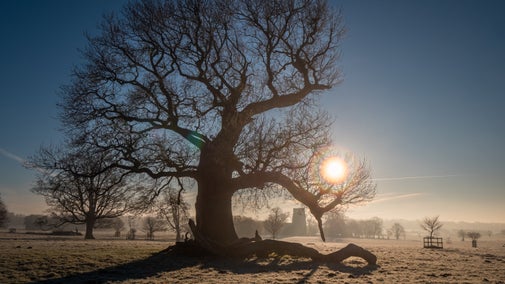
Discover tasty treats in the Squire's Pantry at Felbrigg Hall. Browse the shop and second-hand bookshop for the perfect gift – for you or someone else.
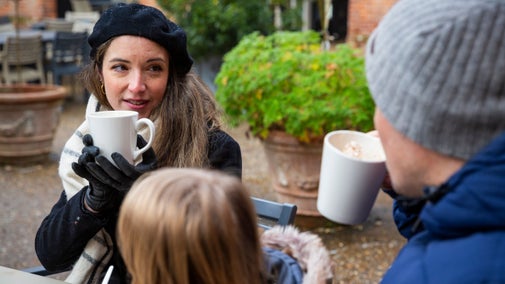
Discover the hall at Felbrigg in Norfolk. A place of surprises and delights where each room stirs the imagination.
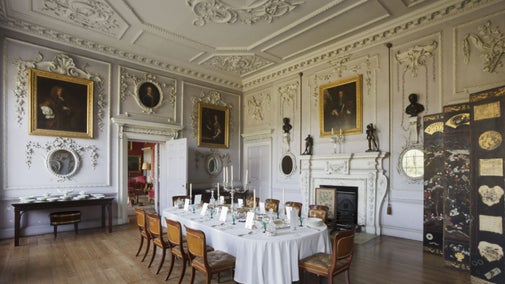
Discover the gardens at Felbrigg, including the widely renowned Walled Garden, bursting at the seams with heady colour, fragrance and textures.
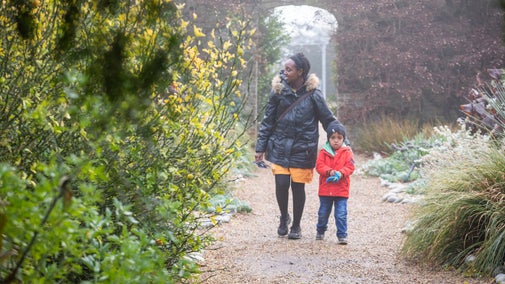
Along this circular walking trail you'll pass historic buildings dating back to the 1700s, notable trees, a hidden lake and an imaginatively planted arrangement of beech trees.
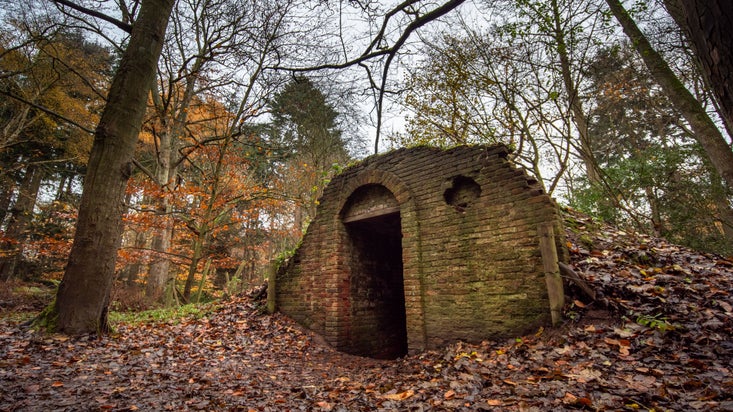

This quirky cottage is a former gate lodge on the Felbrigg Estate, home to an elegant country house, walled garden and rolling landscape park. Cromer Beach and the coastal path are nearby.

An open-plan apartment with high ceilings and wooden beams, on the east side of Felbrigg Hall.

From this woodside cottage, the lake path leads to the Felbrigg Estate’s hall, gardens and acres of parkland.

Sitting in the woodlands of the Felbrigg estate, this cosy and quirky cottage has a modern interior.

A carefully restored cottage with traditional interiors and an enclosed garden on the Felbrigg Hall estate.

In the heart of the Felbrigg Hall estate, this converted stable block has heaps of character and style.

This elegant four-bedroom apartment on the Felbrigg Estate is a converted former laundry.
One of the most elegant country houses in East Anglia, Felbrigg Hall is a place of surprises and delights. It is a mixture of opulence and homeliness where each room reflects Felbrigg’s vibrant history, from the stained-glass windows in the Great Hall to Queen Mary's teapot in the Drawing Room. The Chinese Bedroom showcases Felbrigg’s rich global collections, including luxury exports traded by the East India Company, and the eclectic displays in the Cabinet Room show collections amassed on a European ‘Grand Tour’.
Outside, the decorative and productive walled garden is a gardener's delight. Flowers from the garden decorate the Hall, whilst allotments in the walled garden provide fruit and vegetables for the Squire's Pantry. You can enjoy watching the hens pecking wherever they wish, with only the sound of the busy bees in the flowers.
The rolling landscape park with a lake, 211 hectares (520 acres) of woods and waymarked trails is a great place to explore nature and wildlife on this bountiful estate. With buggy friendly surfaces on main visitor routes, families can enjoy a relaxing day out.
Discover more about the history of Felbrigg Hall in Norfolk, its past owners and how it came to be in the care of the National Trust.

In 1969, R.W. Ketton-Cremer, gave Felbrigg to the National Trust. Today, Felbrigg Hall is home to one of the Trust’s largest collections. Here are some of the highlights.

A project is underway to improve the structural integrity and drainage systems of Felbrigg Hall's South Corridor roof, to safeguard its future and to improve the visitor experience.
Find out more about travelling to National Trust landmarks in Norfolk and the anniversary of two weekday bus services .

The National Trust has planted 100 elm trees that are resistant to the disease on the Felbrigg and Blickling estates and at Sheringham Park.
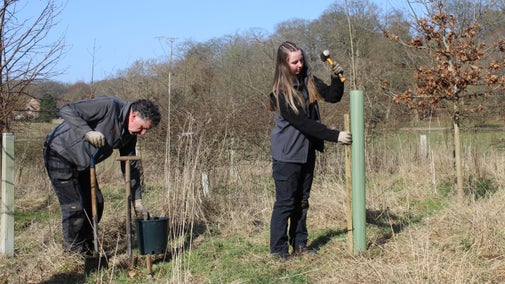
Step into Felbrigg's Walled Garden to discover a growing collection of intricate metalwork and larger than life sculptures, inspired by the flora, fauna and fungi of the estate.
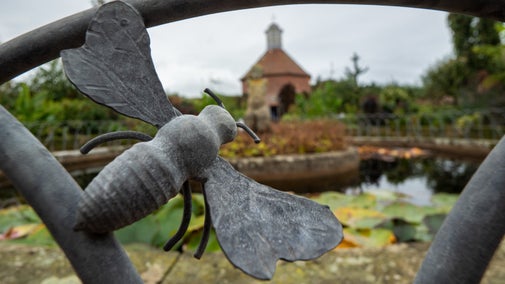
Thanks to a generous gift left in a will, the gardens team at Felbrigg has a new place of rest and refuge in the Walled Garden. The bothy is fully accessible with an air source heat pump and living roof, making it a green and welcoming space for all.

Discover the important conservation work that takes place daily within the hall at Felbrigg, and look back at some of the important projects that have taken place in recent years.

Discover more about the important conservation work that takes place across the Felbrigg Estate, to protect Sites of Special Scientific Interest, as well as acres of woodland and parkland.

Restoration of Blickling and Felbrigg's lake dam walls has been completed, ensuring their strength and longevity, protecting the surrounding land from water seepage.

Discover volunteering opportunities at Felbrigg Hall. From supporting the garden team to helping out with events, there is something for everyone to get involved with.


Join today and help protect nature, beauty and history – for everyone, for ever. Enjoy access to more than 500 places with National Trust membership.
By sharing your email address you’re agreeing to receive marketing emails from the National Trust and confirm you’re 18 years old or over. Please see our for more information on how we look after your personal data.